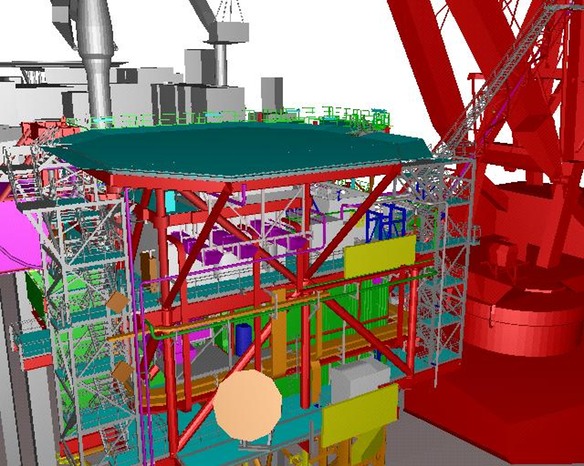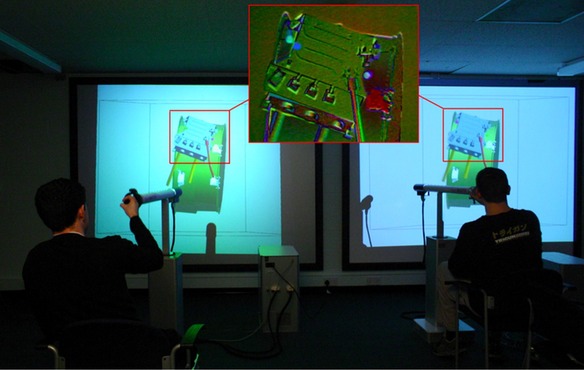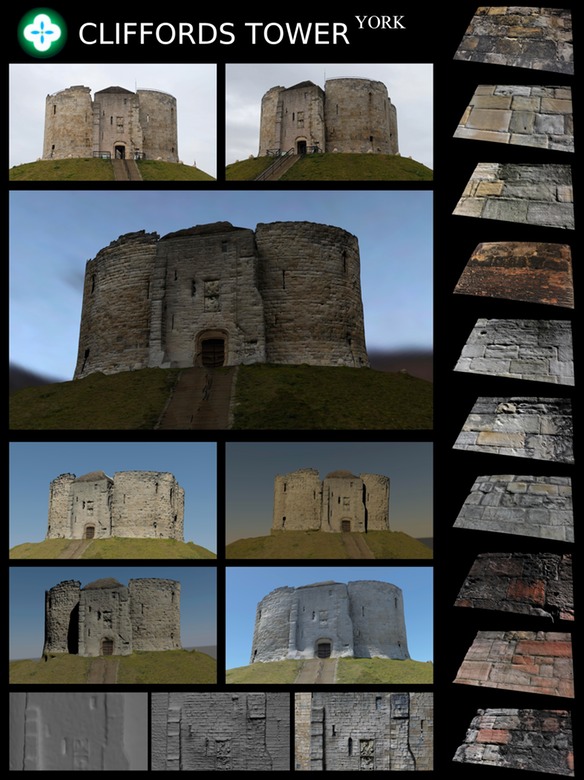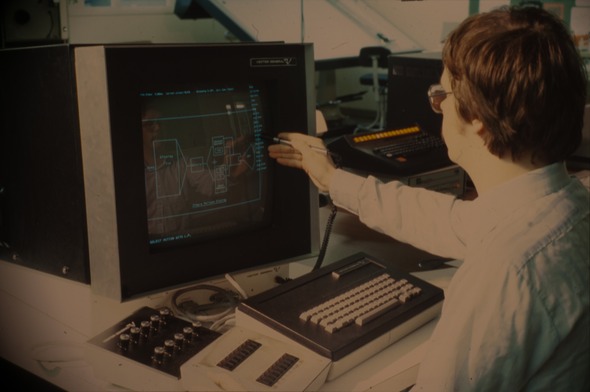Prior to my retirement I was working mainly on virtual environments. Details of these and other projects can be found via the AIG Previous Projects web pages. Specific topics included:

The GNU/MAVERIK VR software system. This was released in 1999 as a free software system under the GNU General Public Licence, and was downloaded by over 30,000 sites worldwide. It was developed originally as part a collaborative project on the visualisation of massive off-shore oil and gas platforms, in collaboration with CADCentre (Cambridge, UK) and Brown & Root (Leatherhead, UK). The picture (right) shows a part of the Conoco CMS-2 platform in the North Sea (used with permission), rendered in real-time by MAVERIK. A novel feature of the system was its use of immediate-mode rendering, using the application's data structures rather than a separate graphics display list. This gave considerable flexibility, enabling the system to be used for a wide range of creative applications.

Haptic interaction, including collaborative manipulation of objects over the Internet. This work explored the effects of latency in networks on shared haptic manipulation, where two users separated over a wide-area network manipulate the same object simultaneously. We collaborated with Professors Fred Brooks, Mary Whitton and colleagues in the Department of Computer Science, University of North Carolina at Chapel Hill. We were able to demonstrate a system that successfully overcame the significant delays in our transatlantic network connection. The picture (right) shows two users simultaneously manipulating the same component of an aircraft engine, using HapticMaster force-feedback devices.

Software for constructing 3D models from 2D images and video, developed by my PhD students Jun Liu and Francho Melendez. The software yielded 3D models of buildings, including detailed mesoscale surface modelling and texturing. The picture (right) shows a reconstruction of Clifford’s Tower, an ancient monument in York. The two images at the top-left of this picture are photographs of the tower; all others are rendered from the recovered geometric model. The steps involved are: automatic construction of an accurate metric model, in the form of a point cloud, from a set of photographic images; Poisson surface reconstruction to yield a dense point cloud (in this case 1.5 million points); capture of local surface geometry and texture using a technique called surface depth hallucination (see SIGGRAPH 2008 paper by Glencross et al); and final rendering of the recovered model, under different lighting conditions.
Permission of English Heritage for image capture is gratefully acknowledged.

Since retirement I have focused mainly on creating an archive of early computer graphics at Manchester, undertaken in the Computer Graphics Unit. A web site including descriptions, images, videos and copies of papers will be released when ready.
The picture (right) shows a Vector General 3D display, installed in 1974, being used to edit a diagram.